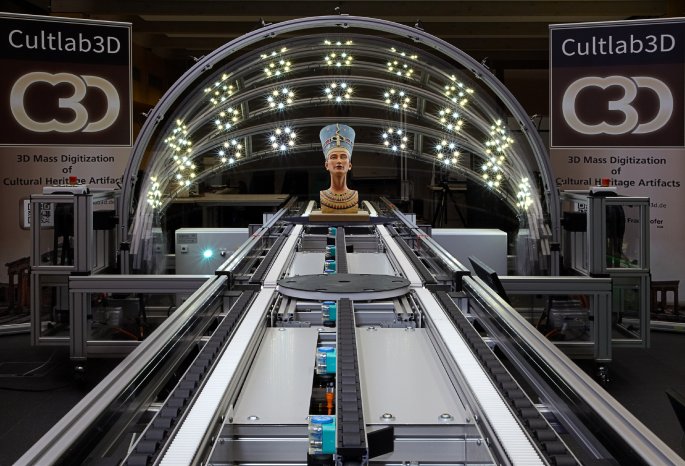(Berlin/Darmstadt) European natural-history collections include hundreds of millions of collection objects available to science for research and comparative purposes. This information is essential for science and the management of natural resources. With the advent of computer technology, collection data have been increasingly digitalized and integrated into networks since the turn of the century, where they are available for the scientific community today.
"Museum collections around the world offer invaluable biodiversity information. Free, open access to these resources is decisive for the promotion of biodiversity research and a better management of nature for a sustainable future. However, this is currently still immensely time-, staff- and cost-intensive", explains Prof. Johannes Vogel, General Director of the Natural History Museum in Berlin. Here, a total of 30 million objects are stored, of which only a small portion has been digitalized so far. With a new 3D digitalization procedure, the researchers of Fraunhofer IGD might be able to change this. Their 3D scanning system CultLab3D scans collection objects quickly, cost-effectively and in a fully automated fashion.
"Our technologies not only offer a faster digitalization, classification and archiving of museum inventory but also substitute expensive items on loan and physical copies for freely available virtual models" explains Pedro Santos of Fraunhofer IGD. In the coming week, the Natural History Museum in Berlin will test the possibilities of the 3D scanning system. What is feasible and where are the limits? Can large fossil dinosaur bones be scanned just as well as small alcohol-preserved fishs or almost transparent tiny crabs? All interested parties are invited to watch the test live from 11 to 14 November 2014 between 10:00 am and 4:00 pm.
Invitation for the panel discussion "Open collection: Opportunities and possibilities of 3D digitalization for research and society" on 11 November starting at 2:00 pm
Host:
Dr. Angelika Grosse, scientific journalist
Impulse:
Dr. Herbert Maschner, Idaho State University
"3D Visualization, Biodiversity, and the Great Extinctions:
Natural History Museums and Global Science"
Panel guests:
Dr. Dietrich Nelle, Assistant State Secretary, Federal Ministry for Education and Research
Prof. Dr. Dieter W. Fellner, Director of the Fraunhofer Institute for Computer Graphics Research (IGD)
Prof. Dr. Barbara Göbel, Director of the Ibero-American Institute, Prussian Heritage
Prof. Dr. Jean-Jacques Hublin, Director of the Human Evolution department, Max Planck Institute for Evolutionary Anthropology
Dr. Gregor Hagedorn, Head of Digital World, Natural History Museum
Dr. Tahani Nadim, International Fellow of the Federal Cultural Foundation at the Natural History Museum
Please register at evolution@mfn-berlin.de until 7 November 2014.
Further information:
www.cultlab3d.eu
www.naturkundemuseum-berlin.de

